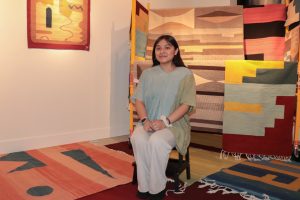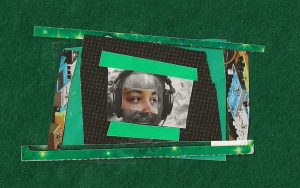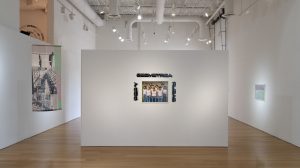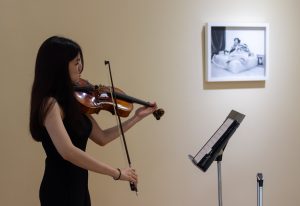
If you know me, you know that I am always looking for the next art, music, or film event to add to my agenda. It’s why I love Chicago so much—there’s always something to do! This past year, I found myself attending a handful of events organized by Chébaka, an artist based in Pilsen best known for wearing Luchador masks while rapping. What intrigued me the most was his ability to curate art and music events, publish children’s books, apply wheatpaste in the streets, put out EPs, and perform said EPs, all while juggling his three gigs at the Giant Penny Whistle, Whole Foods, and the streetwear brand Jugrnaut. I approached Chébaka after attending the third event in a month he had invited me to (they were all so different). I was curious about the hard working Mexican who released an EP titled “Hard Working Mexican” and wanted to learn more about the man behind the Lucha mask.
Para leer este artículo en Español, presione aqui.
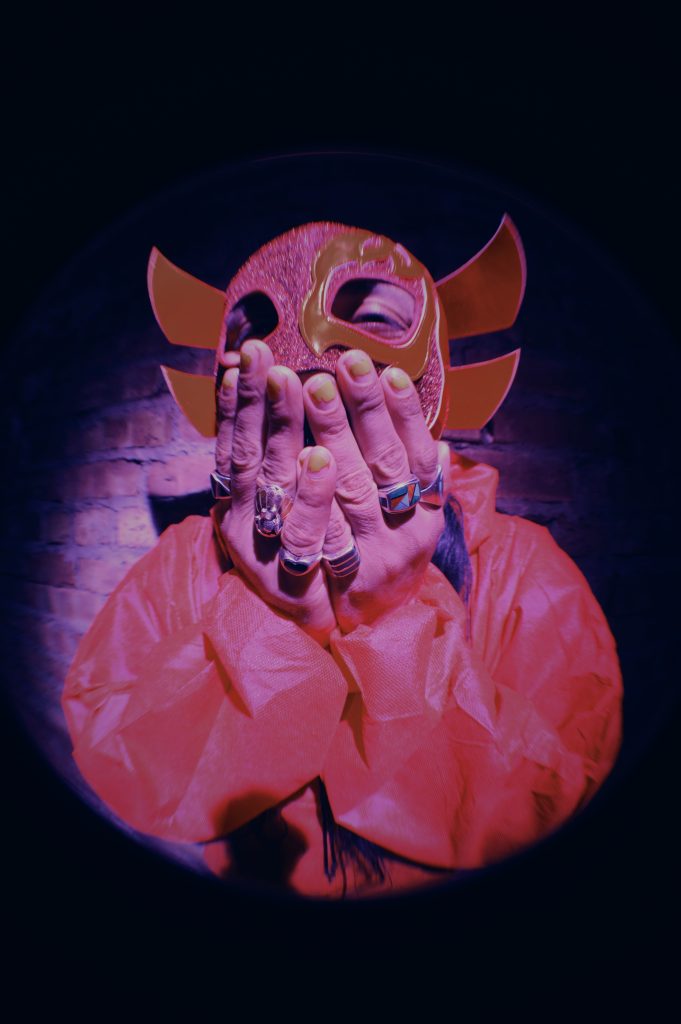
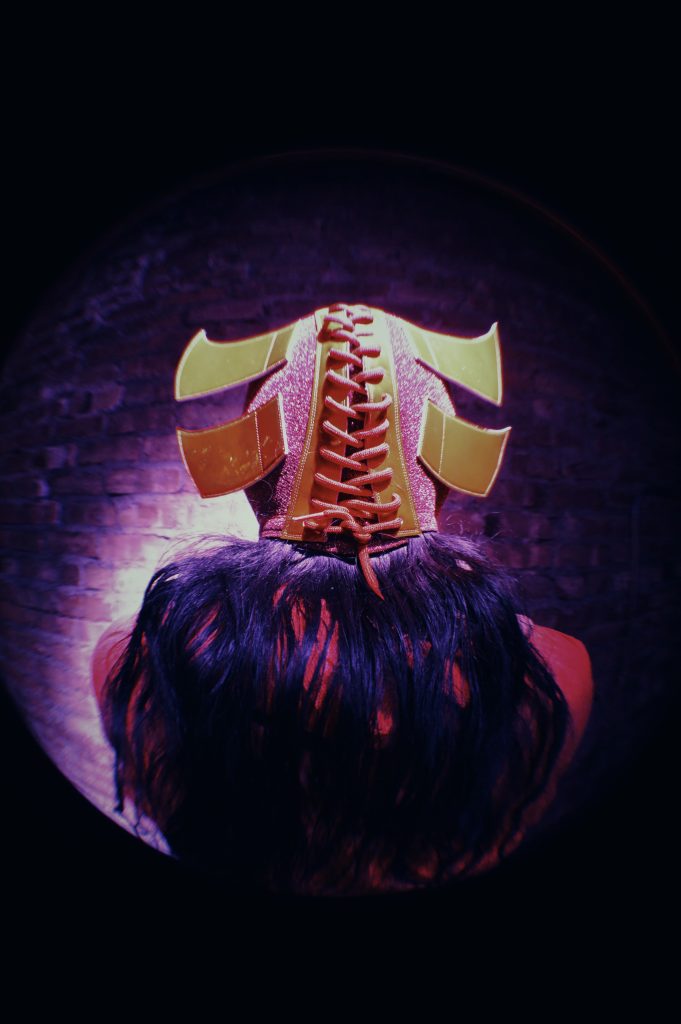
Luz Magdaleno Flores: I am so excited to talk to you! I don’t often get to interview someone who wears so many hat’s like I do. And you’re the second artist from Pilsen I get to chat with. Do you prefer that I speak only in English?
Chébaka: I’ll do my best. I feel like with your Spanglish, I kind of understand your words more than others. But yeah, my Spanish is pretty minimal.
LMF: Tell me about your character/persona that you coined—Chébaka—and how it began.
CE: The reason why I wear the mask now compared to the reason why I first put it on has changed a lot. But one thing that’s always been super consistent is it being so Mexican. When I first put it on, it was performance art, which never ended up [coming] through. And then I did a shoot with it and I just felt really powerful. It’s grown a lot, evolved a lot. I guess the simple answer: it makes me feel pretty and I think [that] anything makes you feel pretty is worthwhile. To me, it’s still a performance piece and it’s still me projecting this image of a strong Mexican. If you look at what the Lucha mask is connected to, it’s warriors, it’s strength, it’s fighting. So everything I do with my art is showing that, like, to be Mexican, you have to be strong, you know? The mask is me painting myself and my people in the most beautiful light. All of my art is about unapologetic self-expression, representation, and the mask is all that! I’m literally wearing my culture on my face.
There’s been so many times where I’m the only Mexican, Hispanic, Latino in the room and before I have a chance to say hi or introduce myself, who I am, and what I’m about, people are consciously or subconsciously putting us in a box—so by me wearing this mask I’m reclaiming that power. I’m telling you how to see me, I’m controlling my narrative. It’s hard to be a Mexican man—like Selena’s dad said, “You have to be more Mexican than the Mexicans and more American than the Americans, both at the same time! It’s exhausting!” I made a whole album called “Hard Working Mexican” and I don’t know Spanish—it’s something I hear all the time that it invalidates my “Mexican experience” in the world. As if it makes my skin any lighter. Like it changes my experience or my narrative or what I’ve gone through or how people see me and shit, you know? I guarantee you people see me more as Mexican and that’s something I’ve had to deal with my whole life. So the mask is really me doing my best to further the culture and just kind of redefine what it is to be a Mexican American making art.
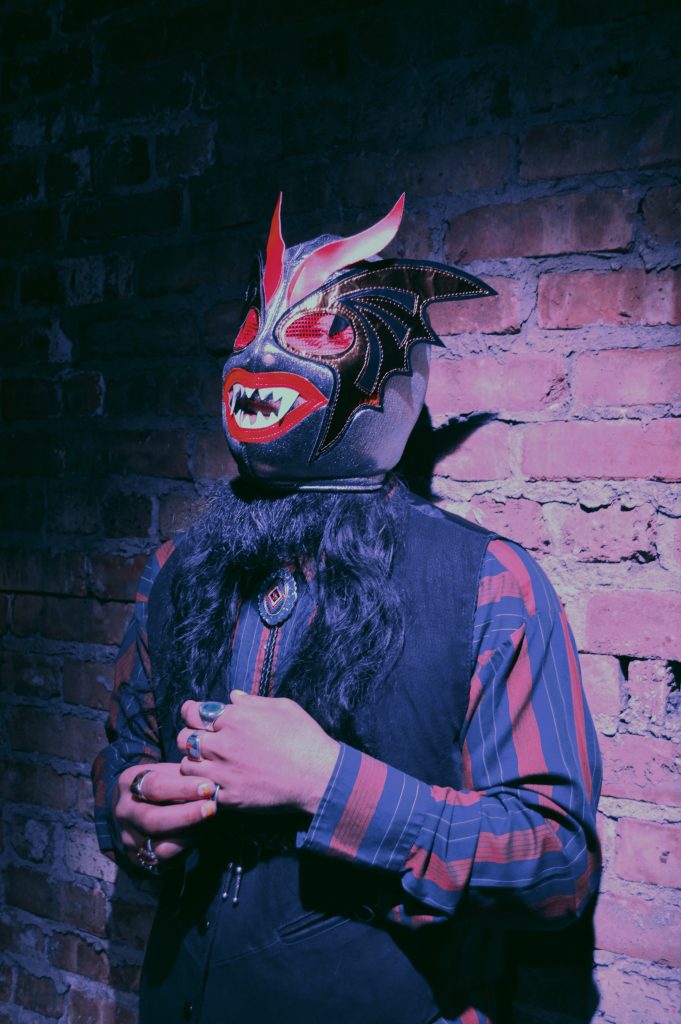
LMF: Was Chébaka born during the pandemic?
CE: I think it was in 2017 or 2016? I’ve been building this character for a while. I first performed with the mask on during a show in Waukegan. I thought it was really cool for me to start this whole new idea or concept of this character back home, in a spot where I don’t really go back to and don’t perform that often anymore. So to be able to present this whole new idea at the crib, I thought was really special.
LMF: Let me pick your brain on the opposite of being a hard-working Mexican. What does rest look like for you? I know you work three jobs, juggle your musical career, and organize on top of that.
CE: Rest looks like playing Pokémon Colosseum on my N64 at two in the morning. To me, that’s relaxing. That’s when I allow myself to just chill and not worry about anything or think about anything. Even when I dream, I’m dreaming of music like performing or ideas. Sometimes it’s dope if I get a dream of a song.
LMF: Let’s focus on Lucha for a second. How do you go about choosing what mask you wear and when?
CE: At first I was looking for the right mask, like, I just knew I wanted something to be very Mexican. That was the main idea. Years ago, before that, I had tried on a lion mask for a photo shoot and I felt really empowered. It was really theatrical, it was as if I was invoking a spirit. I guess it’s kind of the historical idea behind wearing a mask, right? Like you’re invoking the spirit of that mask. All cultures have their versions of people hiding behind a mask. We all wear masks—mine just happens to be Mexican. When I first started wearing one, it was a Tinieblas mask because it reminded me of the yellow Power Ranger. And it’s not my mask, you know, I’m kind of just borrowing it. I knew I couldn’t continue doing that. So now when I wear the new ones, it’s cool because I get to kind of assume the persona or the identity of that mask. So it’s like being a different character every time. But actually right now, I’m working with Kewly on the Chébaka mask design. He does a lot of flyers for the Giant Penny Whistle. I feel like that’s the last piece of the big Chébaka puzzle. Right now, my favorite mask to wear is the Hermano Muerte mask. I love skeletons. So the mask is going to be kind of a skeleton-inspired one. I’m really excited. It looks really beautiful so far.
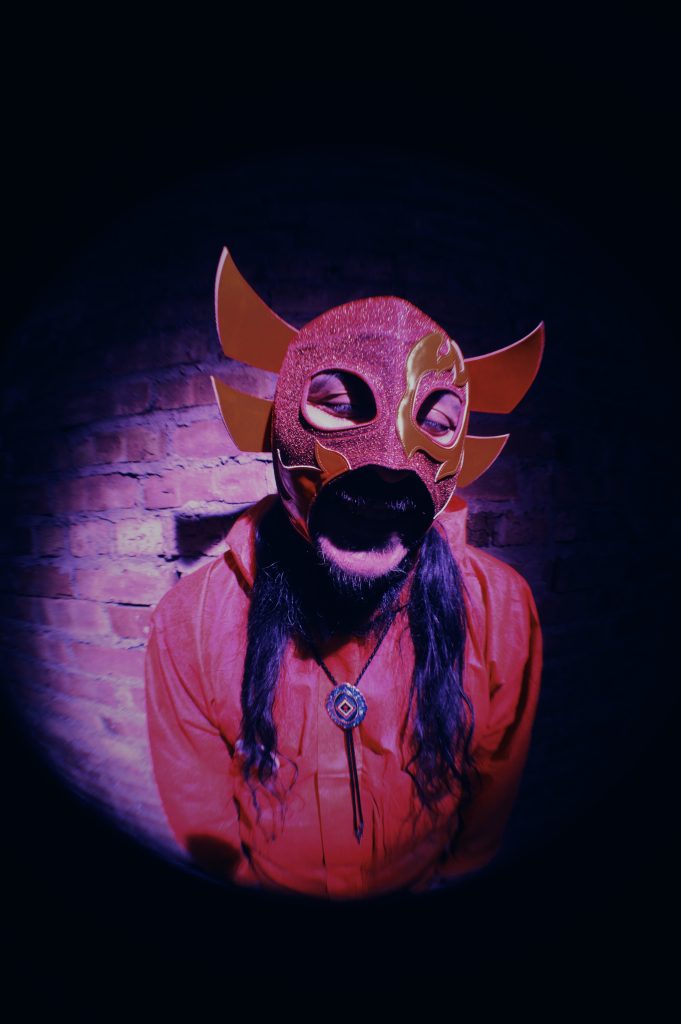
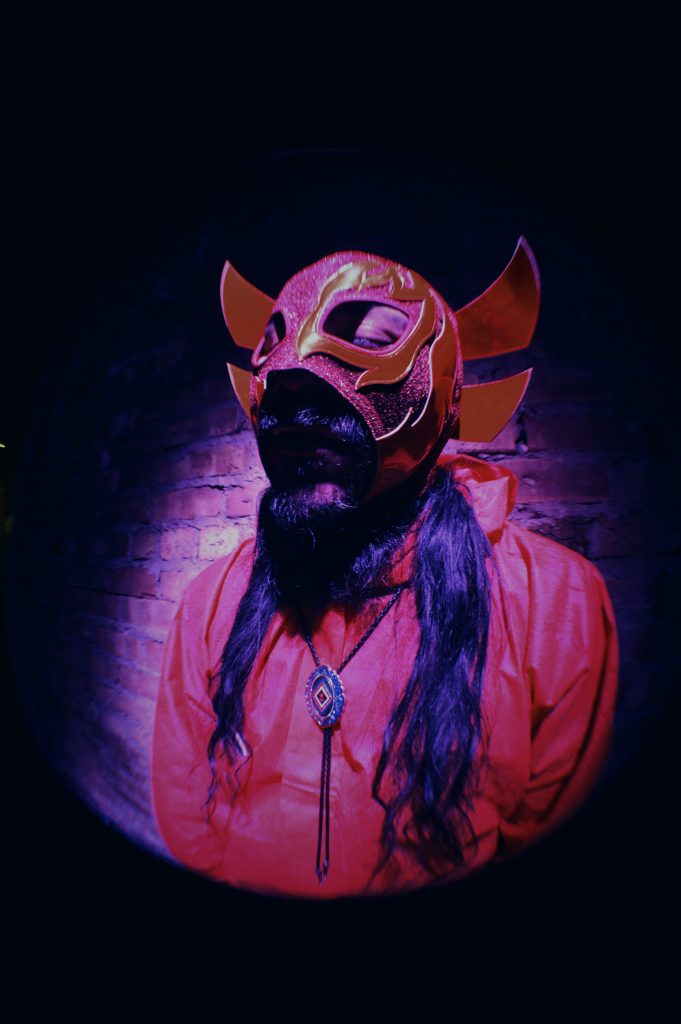
LMF: That’s fun! Talk to me about “Lonesome No More”.
CE: “Lonesome No More” is an EP project that’s been a lot of fun that took two and a half years to make. It started really randomly, and just progressed really randomly. My cousins in Houston would get intoxicated and then record random guitar riffs on their phone and then send it to me. And then I would write to it. I like making music with my family. It’s really fun and satisfying on a personal level. These songs are cool and really fun to write because they’re really short. They average around a minute. And that’s all I had because that’s what my cousins would send me and that’s what I was rocking with. They don’t really do music like that. So if I asked them to make any changes, they wouldn’t be able to. So it was a cool challenge to write to what I had. It’s important to me to tell the story that I wanted to tell, and I think I definitely accomplished what I wanted to and I’m really happy with it. You know, this EP is meant to be played in a small room. While you’re laying down next to your lover. “Lonesome No More” is also a film, I am working on getting it into the Latino Film Festival which would be a dream!
LMF: Okay, now let’s talk about “Lonesome No More,” the film. I describe it as the visual component to your “Lonesome No More” EP, correct?
CE: Yes and no. It contains music from the EP. The name is the same, but there’s more to the film than the EP. The film is composed of three independent stories told at the same time. None have anything to do with each other. I am really embracing the concept of randomness and where that can take you and lead you. It’s really cool to see what, even when shit is random, it brings in.
I do a lot of shit. Sometimes different projects will fall back to back to back and people will ask me if I plan for them in that way. Some things just bloom when they bloom and I embrace it. Given how short the EP was, I knew I wanted to do more with it. I had this idea in my head of painting over a Lucha Libre mask; I thought it was a cool concept and I grew the idea from there. Initially, I wanted the dialogue [in the film] to act like an interview between myself and an interviewer. I didn’t like the direction it started to go in so, again embracing randomness, I turned to the books “Slapstick or Lonesome No More!” by Kurt Vonnegut and that’s where I got my monologue from. Three separate times I picked four pages and then took sentences from the pages and compiled it into a list that I pulled a monologue from. It was so creepy to see what I landed on! One of the lines was, “I work very hard,” and I was like, holy shit! I was spooked! I’ve been using the book as my bible for this EP and film. It’s not even my favorite book by him. When I was thinking of how to paint on top of the mask for the film I knew I wanted it to be a clown. Then I realized this book has a clown on the cover! I have always wanted to be a part of [Kurt Vonnegut’s] tribe, Daffodil-11.
LMF: So are you lonesome no more? How are things different now than before for you?
CE: I’m just really confident in myself, my ability. My skill set is really focused on what I want now. Everything that I’ve done up to this point is giving me the courage to do more, take on more, to want more, to know that I can. Traumas can stunt you and I have my fair share. When I was working on the film for “Lonesome No More,” I had a lot of things going on, you know I always have a lot on my plate, but this was just like me just really testing myself. The reason why I knew I could make this film is this belief in myself that hasn’t always been there.
We recorded the film in September and I was also putting together a set for my show at the National Museum of Mexican Art that was on the first day of Hispanic Heritage Month, and it was just a lot. A lot of personal stuff was going on, too. For the first time, I felt like I was on my own trying to figure this out and it was chaotic, and it was painful. I didn’t understand what it was that I was feeling. I couldn’t put a word to it. It was like the more connected I felt to the creative energies, the less connected I felt to everyone else around me. And then it wasn’t until I was drunk and talking to one of the bartenders at the Giant Penny Whistle at the end of the night that it hit me that I was lonely. The people that I have normally confided in and helped me to deal with stuff—[helped me with] how I deal with stuff—weren’t there and I was just dealing with things myself. And then after that, once I was able to label how I felt, I didn’t really feel that way anymore.
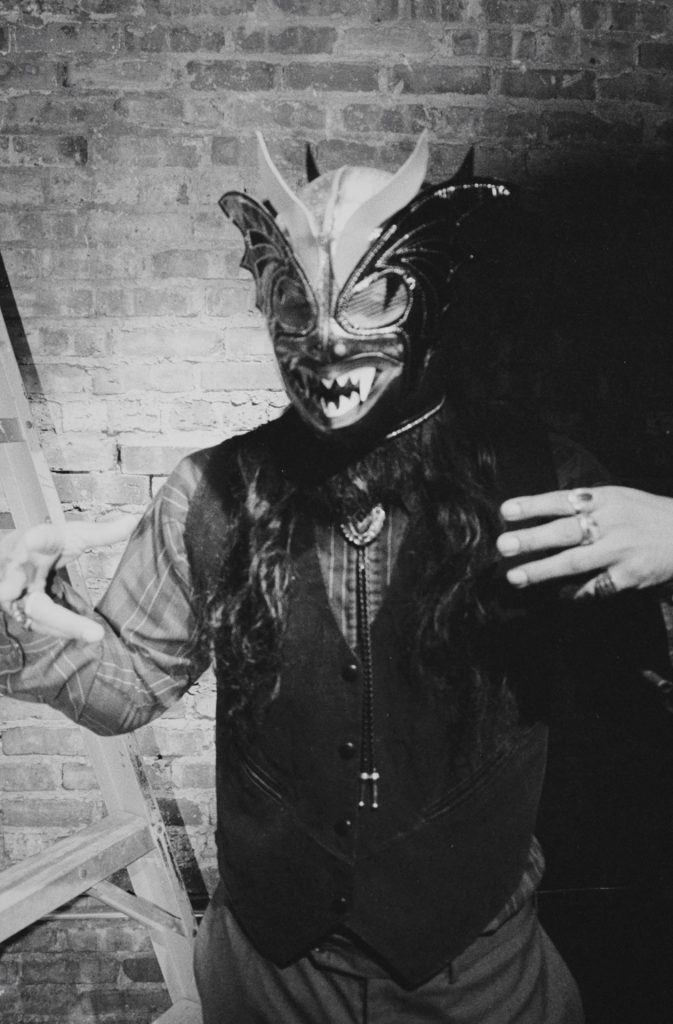
LMF: What does your writing process look like?
CE: I write all the time, I’m always writing, I write music in my head. I’ve been writing music down more lately because I like to see the words on paper, that’s been a lot of fun. But for the longest [time] I just wrote in my head. And then I just keep repeating the process over and over again until you have the verse or song, it’s like chipping away at this big slab of marble. It’s more like sculpting than it is writing. If I think of a melody, I record those on my phone because they are harder to remember. Oh, my favorite is when I get really fucked up, and I write in my notes and then I go back to it the next day and I’m like ‘dammmn, that’s fucking horrible’ or ‘man, this is dope!’ I’m never not writing rhymes. I always say we come from effort, not privilege.
LMF: When did you notice you had this don for music? When did you begin to notice you had a gift for music making?
CE: I’ve always made songs. When I was little, like four, I remember singing little melodies and little love songs, just, like, on the swing to myself. I know I am very blessed to have always known what I wanted to do since I was little: I wanted to sing and sing for others. It was always the way in which I expressed myself. I remember being in second grade walking to the bus stop with my sister and creating these symphonies in my head, legit symphonies for instruments. It took a while to discover rap music. I got into it making music with my cousin Jermaine. We really got into it because of DMX. We called our group Demented Dogs or Double D and that is when I started writing. My mom got me my first writing book. It was this turquoise purple notebook, and it had all the zodiac signs on it. It was really pretty and that’s where I started writing all of my own raps.
And then I started getting better with it, getting doper, I started getting more courage. It took a really long time. I’ve always had this passion, and always wanted to do it. And everything’s been clicking a lot.
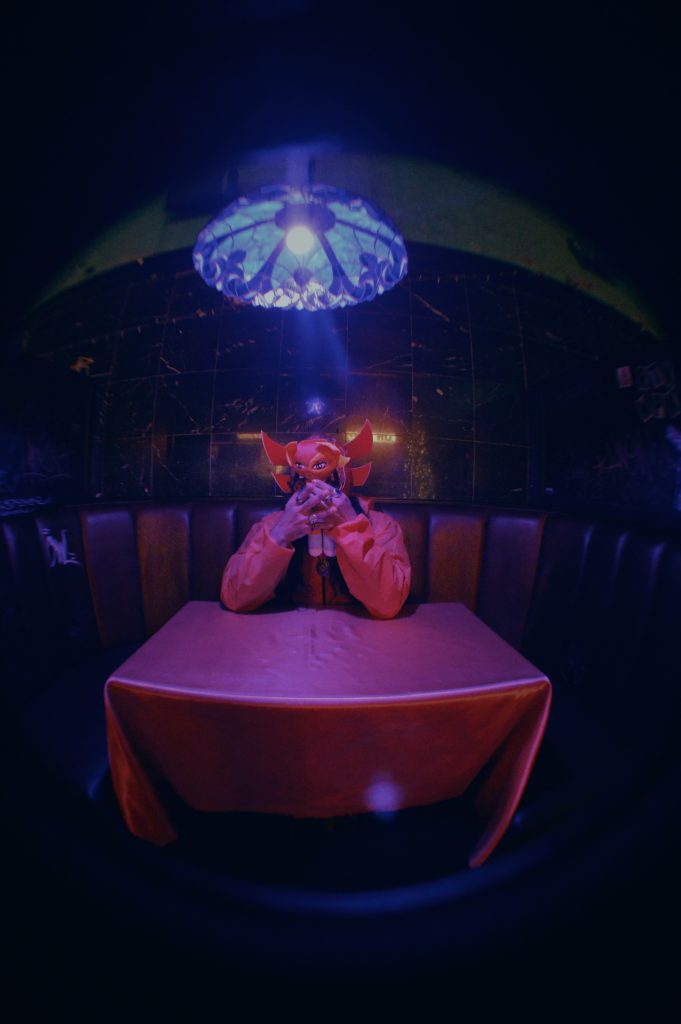
LMF: Do you remember your first performance?
CE: I have footage that my mom filmed of my second grade talent show. I’m singing “I Can Love You Like That,” by All-4-One. It’s actually a part of the short film I did for the National Museum of Mexican Art. We ended the film with that footage. That clip makes me so happy because it’s proving that this is what I always wanted to do. I’m also wearing sunglasses. This is who I’ve always been.
LMF: Any musical inspiration you wanna spotlight?
CE: Freestyle music had a really big impact on me. Stevie B, Lisa, Lisa, Johnny O. Those are my earliest memories of music. I remember my godfather, my mother’s brother, DJ, and uncle Joe Robert spinning and hearing his mixes and shit. Freestyle influenced me for sure.
LMF: Can you tell me about the Brighton Park based indie music label, No Sé Discos? How long have you been with them?
CE: Really, since the genesis, it’s been me and Jorge Ledezma. That’s what was so special about “Hard Working Mexican” because those songs were seeds that really allowed everything to bloom to where it’s at. It’s family, they’ve done so much for me: Jorge, Lupe, and Angel have just been so kind and giving. It’s really nice, when you get around other people, other artists, other talent and you don’t have to pull everything. I don’t need to have all the fucking skills in the world. I go to them and they can understand what I’m trying to do and they can help me build it more and that’s what we’ve been doing. I live for No Sé Discos. I like to say I’m the one man street team. I am gonna scream into the universe the loudest and promote us as much. We are stronger together than individually. Everyone has their own style, sound, and everyone is really different. But it makes so much sense for us to come from the same house, the same label. You can see what I mean when you come to our shows.
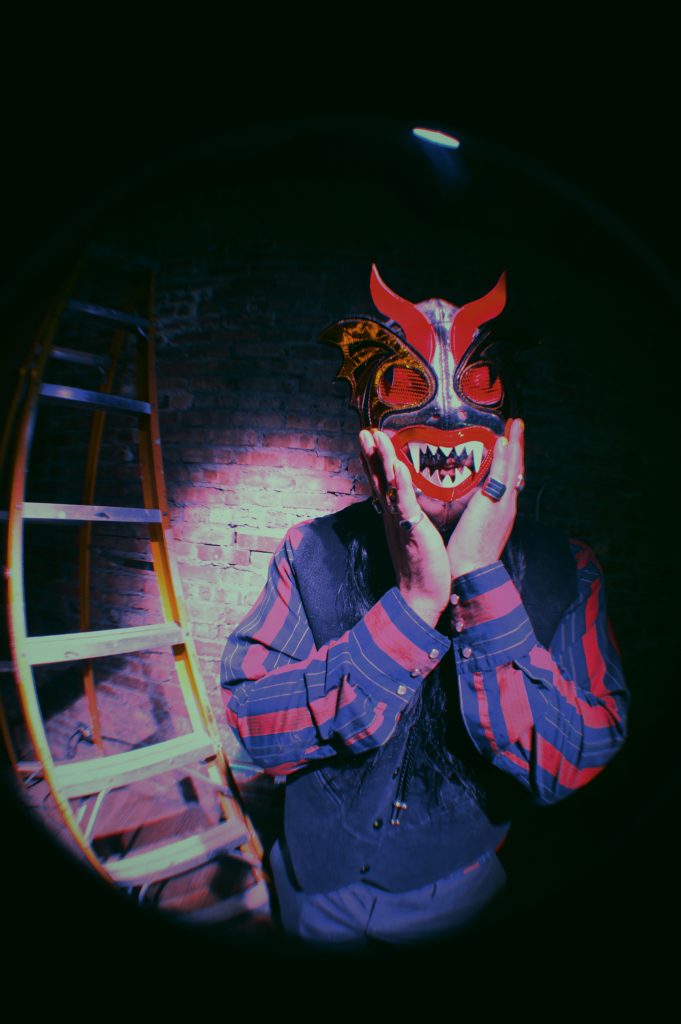
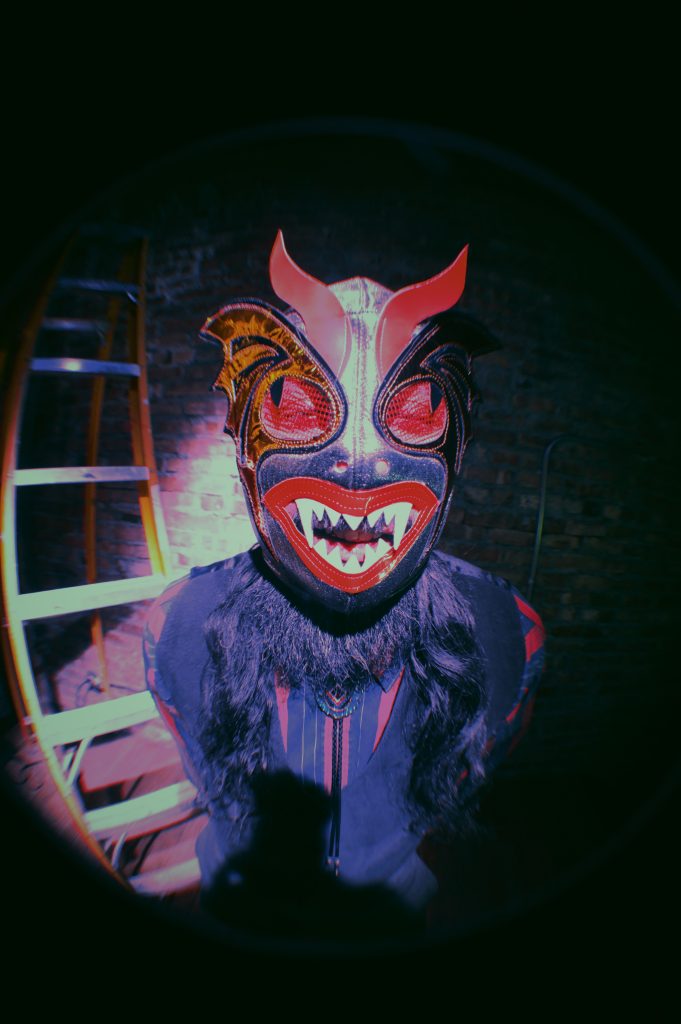
LMF: What advice would you give to someone who feels overwhelmed with the amount of projects they want to complete in this lifetime?
CE: Break it down to the most simplest idea and start there. My ideas are really gigantic and I can’t attack everything all at once. So, let me break this down to the most simplest thing that I can do to start to build some momentum. My artwork is all about momentum. You don’t have to do everything yourself. That’s one thing I learned when we were working on both children’s books: I don’t need to be an illustrator, too.
For example, with the Christmas song we’re working on right now I know exactly what I need from each person and I try to make it easy for them, which helps get the idea completed. One thing I hear a lot that really frustrates me is when people don’t start an idea, a passion, a goal, because they feel they don’t have the support from the people that they feel like they’re entitled to be supported from. And I think, ‘well, you’re proving them right, you haven’t shown them anything.’ No one should want my dream more than I want my dream. No one should want Chébaka to be better than Chébaka wants himself to be. You have to be your biggest supporter, to be your biggest fan. I have an altar to myself in my place. We should love ourselves. I love me, I think I’m fucking dope.
It wasn’t always that way. And once I got past that hurdle, I didn’t ever want to go back. I’d much rather focus on the long list of reasons why I’m dope and celebrate myself. I want everyone to have that feeling. And that’s really the best way to start something. It takes time because the world is hard and brutal and cruel, it has its own way of bringing you down. But I don’t know, man—just loving yourself, supporting yourself, and just fuck what anyone else thinks. If someone isn’t promoting you, celebrating you, or putting money in your pocket, fuck them. I might not finish this race on time but at least I can say I tried/That is a lot more than y’all can say/Criticized me cuz I thought this way/Music is an art display/I’m just pulling at my heart today. A lot of people don’t do a lot of shit. You know that! You do a lot, too. A lot of people don’t. You have to start somewhere and you have to do it for yourself first.
LMF: Speaking of celebrating you, you recently curated your first film festival and art show. Anything you learned?
CE: It felt really good to sit back and watch. With other events, you have to run around a lot and this felt really nice. Shit doesn’t move unless you move it. I really wanted this. It was so nice to see all of No Sé Disco’s work on the Sweet Void Cinema big screen. Most people don’t get to see music videos on anything bigger than a computer screen, so it was really incredible to see our work on such a large format.
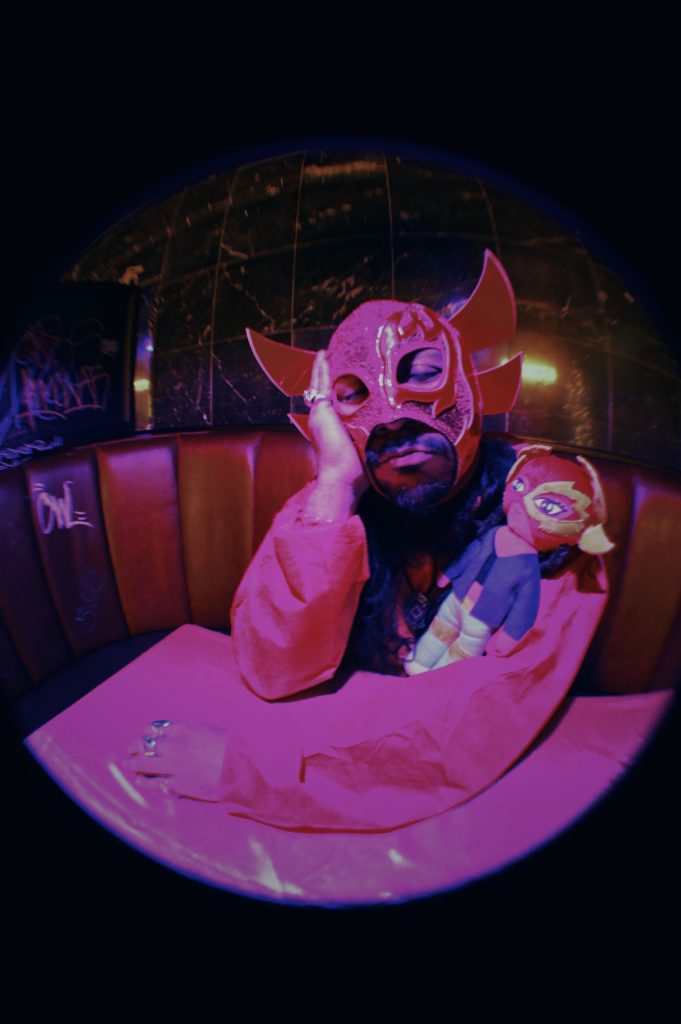
LMF: That venue is so fucking cool! I love an alley entrance. I felt like I was in Harry Potter! I had no idea Chicago had a DIY movie theater. I am totally going to hit them up when my “Hasta La Muerte” film is ready for screening.
CE: I love a good alleyway entrance. I really wanted to have it there. The venue itself adds to the experience a lot!
LMF: Tell me about the childrens books you have written!
CE: I’m so lucky to work with the other half of “The Children’s Guide,” Luis Rodriguez. He’s an incredible human, without him this book would just be an idea in my head. We make diverse, socially responsive children’s books. Like I said, all my art is about unapologetic self-expression and representation. I think it’s important for children to see themselves. The first book is called “A Children’s Guide to Rap and Possibly Saving the World,” and the second one is called “A Children’s Guide to Chicago.”
“Guide to Rap” was an idea I had that was inspired from a rap battle. And the original title was “A Children’s Guide to Battle Rap” and then I started messing around with it a little, and the rest kind of spawned. I met Luis and he already had self published like six or eight books. He’s a middle school teacher. He taught like seventeen years of history and civics and he has three little ones who are actually featured in the books. I really leaned on him a lot to make both books happen. The first book is really about how rap and hip-hop can be used as a tool for self empowerment and self-expression. We wanted to combat the stigma that rap and hip-hop have.
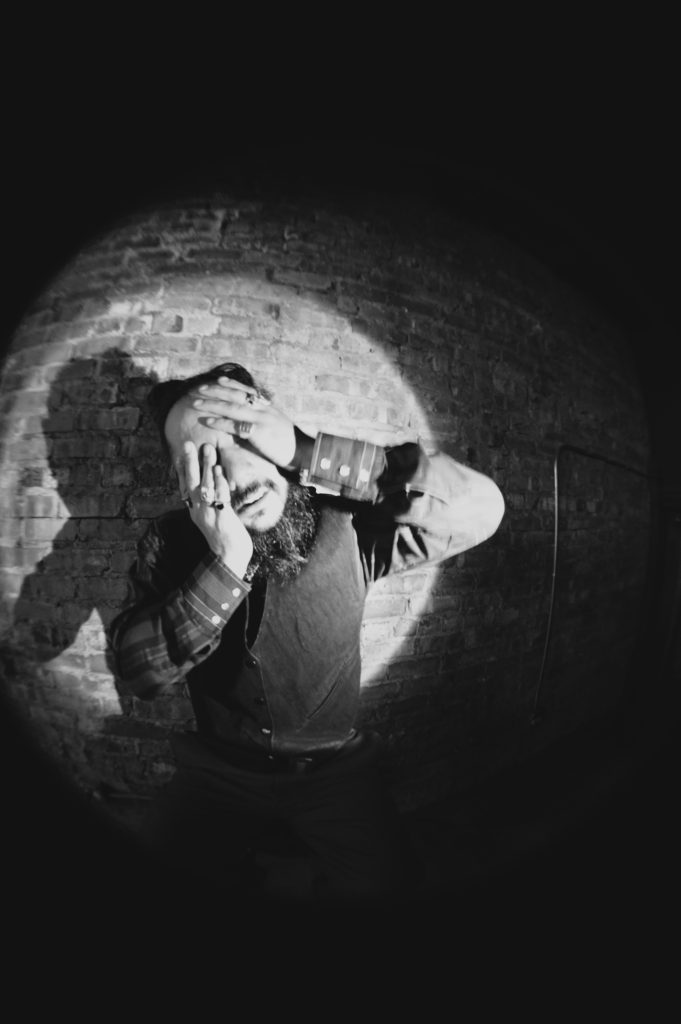
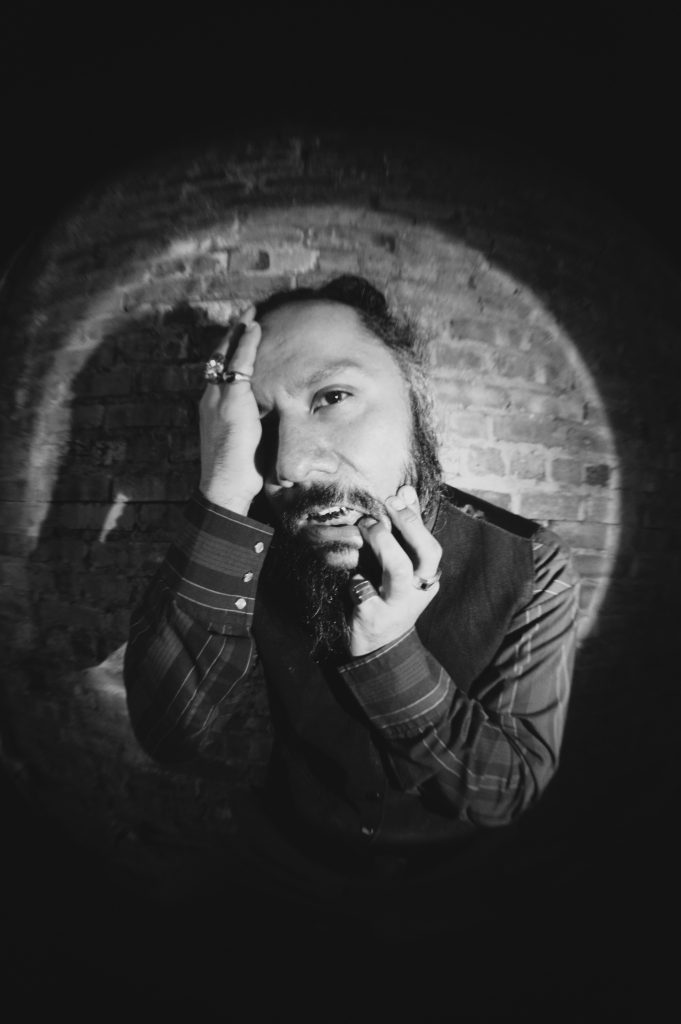
CE: The second book, “A Children’s Guide to Chicago,” was funded by a DCASE grant. In this book, our mascot or narrator Lucha Lupe takes a diverse group of kids to fourteen different neighborhoods in Chicago. She showcases what makes this city so pretty. I really wanted to paint the city as beautiful as I could, because it’s always been so beautiful to me. A lot of the neighborhoods in the book have been demonized by people outside the city, people in the media. We did a lot of research. I wanted it to be as authentic as possible and when I was looking up Englewood, you would think the fucking sun doesn’t shine there or the grass doesn’t grow or you can’t see rainbows. When in reality you can probably see the stars in Englewood more than you can in Gold Coast. I wrote [this] verse and it’s really my favorite piece in the book, “We have hope in my neighborhood, we jump rope in my neighborhood, we play in my neighborhood, there’s love in my neighborhood, there’s people giving back to the neighborhood.” I’m really happy with that book. The next one I want to write is “The Children’s Guide to Halloween.” I’m really excited for that one!
LMF: Oooh, I am excited for that one too! Speaking of neighborhoods, you live and work in Pilsen. How has this neighborhood influenced you and your work, if at all?
CE: It definitely does, man. I love Pilsen, Pilsen is home. When I first moved to Pilsen back in like 2010, it reminded me of Waukegan, this very specific part of back home. I love it here, I feel safe, I know the corners, I know the allies, I feel great. A lot of the art that I’ve done has been in Pilsen. A lot of my photoshoots have been here and those photos are showcasing the beauty. The photoshoot on the pink line, the gas station, at the textile outlet, or even our photoshoot at the Giant Penny Whistle. The neighborhood energizes me, it feeds me, it houses me, there’s no way it couldn’t affect or influence my art.
LMF: Last question, what do you want to be remembered for Chébaka?
CE: I’ve been thinking about this a lot. I just want to offer a new way, a new path. I’m not cookie cutter by any means. I’m brown, hairy, and loud. And that’s not really the person that is promoted. We’re all artists who have a dream, but I just want to offer a new way. When I was coming up, I didn’t have a lot of Mexican influences. There was never anyone who looked like me doing what I wanted to do. And honestly, there’s still not a lot. It definitely would have made it a lot easier for younger Baka to have a path to follow instead of having to forge my own path and figure it out, but the stubborn Taurus in me kept moving forward. If I can create a path, a new way, and redefine what it means to be a Mexican making art or what it can be, that would be really cool. I want to keep painting my culture, my people, my neighborhood, and myself as pretty as possible. I think that’s the job of the artist: to inspire the listener or the viewer to want more, to do more. I think that’s the ultimate goal. I’m not gonna say I’m the first Mexican rapper to wear Lucha Masks, but I’m the first to do it the way that I’m doing it.
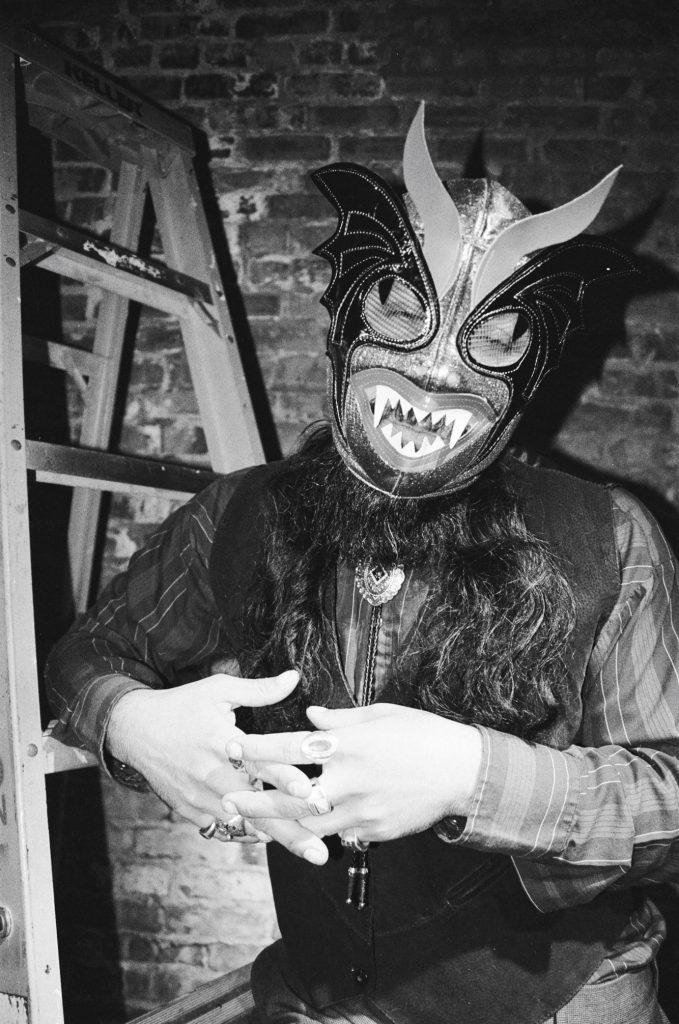
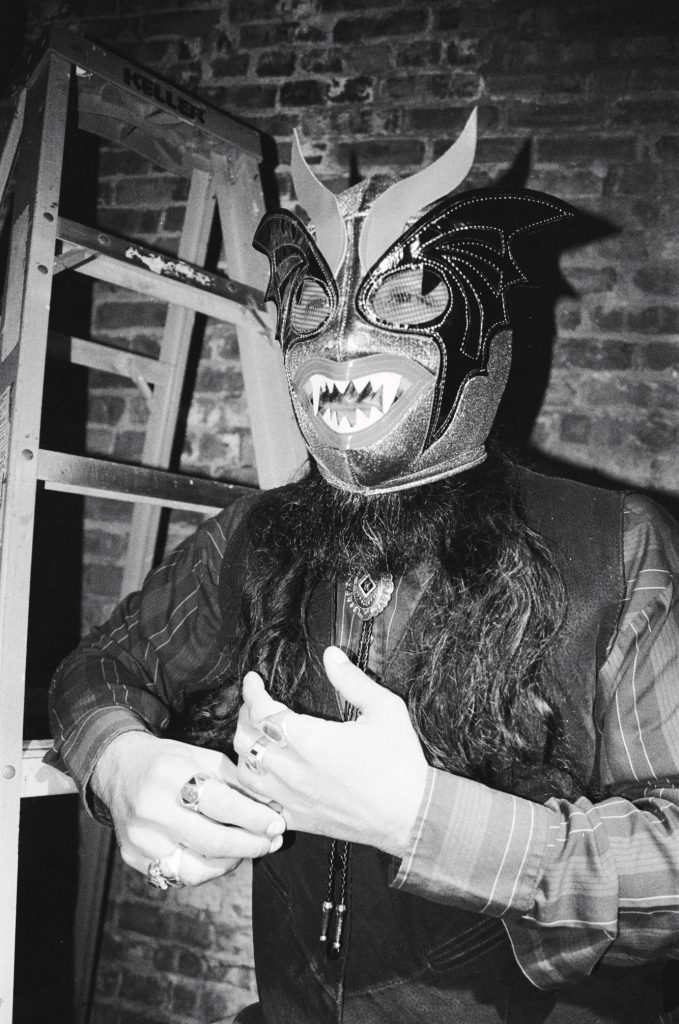
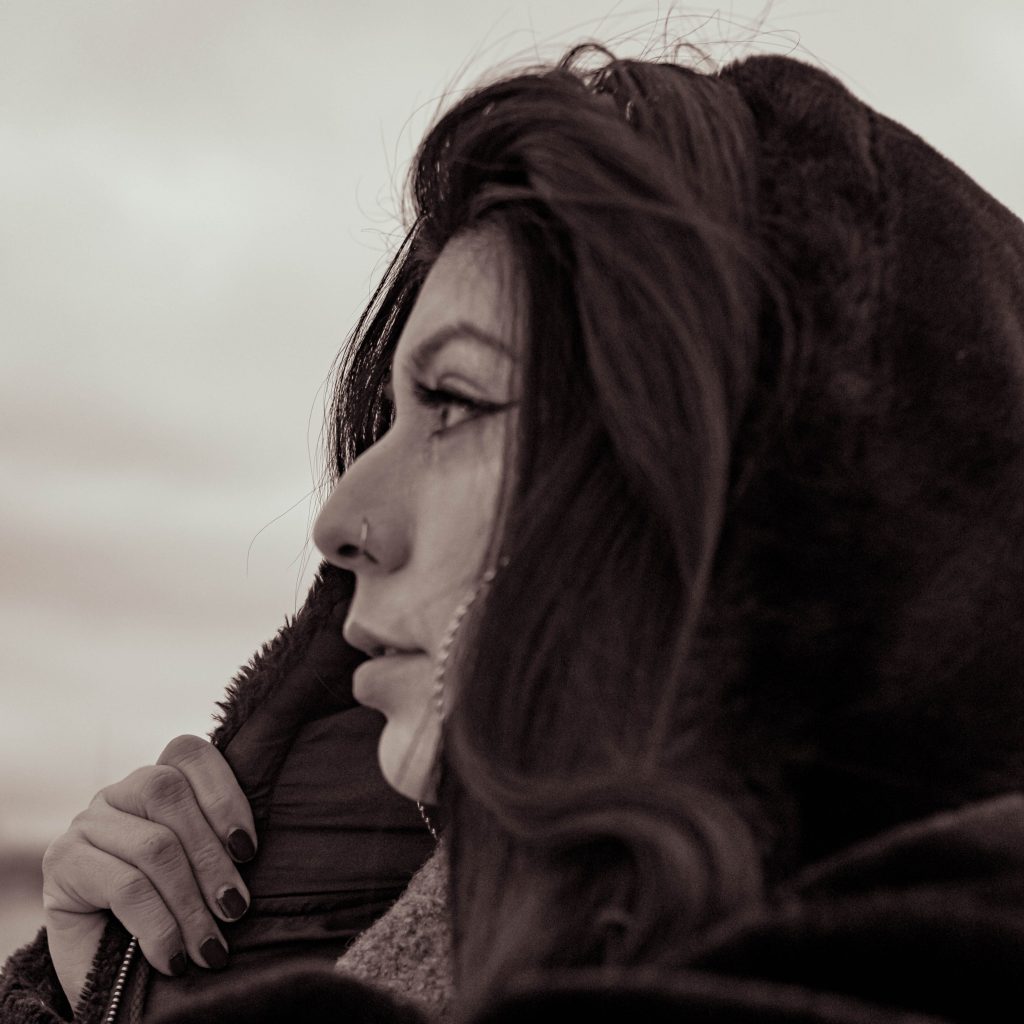
About the author and photographer: Luz Magdaleno Flores is Sixty’s Bilingual Editor. She is a Chicana art curator, poet, textile artist, content creator, and fotógrafa based in Pilsen by way of Oxnard, California, also known as DJ Light of Your Vida. As a content creator and layout designer she has published Tiempos Oscuros Foto Magazine, La Pera Chapbook, Bajito & Suavecito Foto Zine, Cultura Mexicana en Pilsen y La Villita Chicago (winner of the first place photo book 2016 at Roosevelt University), ¿SERIO? Zine, and edited the last six Brown and Proud Press Anthologies. Her words have been featured on the Chicago Reader, South Side Weekly, Canada’s Broken Pencil Magazine, Xicanation.com, and Reverb LP. @lightofyourvida


